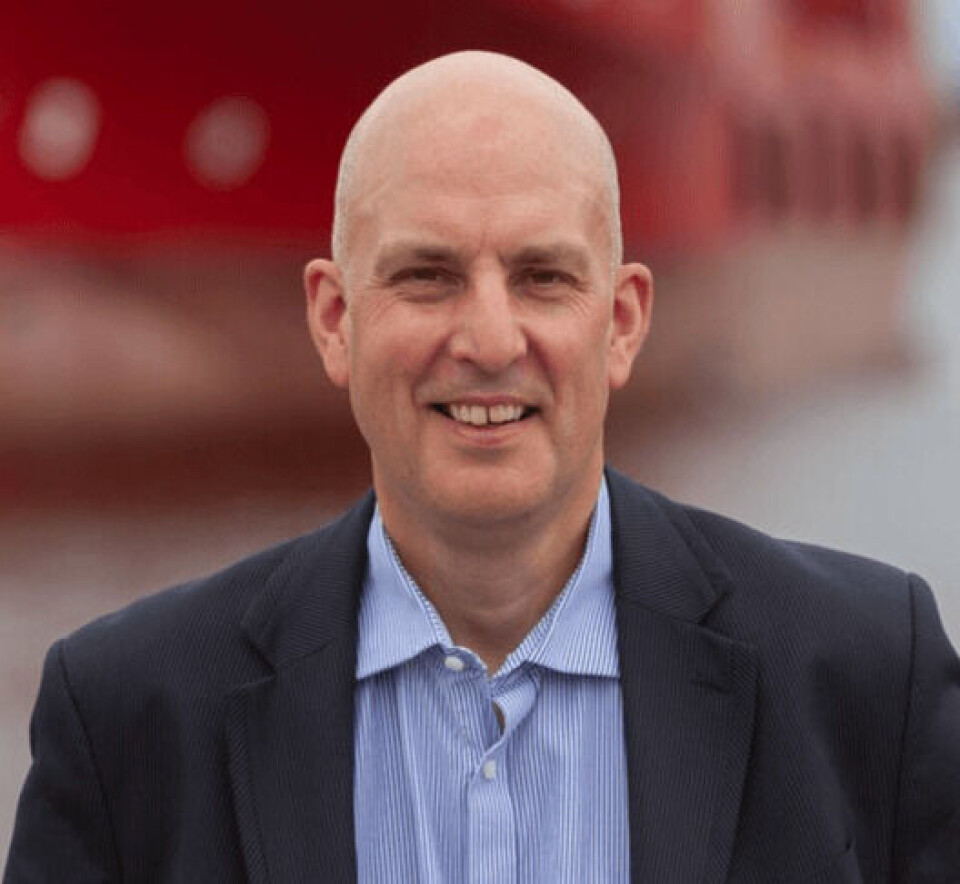
Benchmark pumps up the volume for new lice medicine
Speeding up the transfer of water between wellboats and CleanTreat vessels has shaved two days off treatment times with Ectosan Vet
More than 34 million farmed salmon have been treated for sea lice with the novel bath treatment Ectosan Vet since it started being used commercially in Norway a year ago, the product’s maker, Benchmark Holdings, said today.
During that time improvements in the use of Benchmark’s CleanTreat system, which removes Ectosan Vet residues from treatment water, have reduced treatment time of a 3,500-tonne site by approximately two days, significantly reducing customer costs and increasing efficiency, the UK-registered company said.
Lice treatments with Ectosan Vet, which contains the neonicotinoid insecticide imidacloprid as an active ingredient, must be carried out in a closed system in a wellboat.
Once the treatment is finished and the fish have been returned to their pens, the treatment water must be transferred from the wellboat to a CleanTreat vessel. It is this process that has been speeded up, enabling the wellboat to be returned to delousing or other tasks more quickly.
Vessel modifications

CleanTreat allows for the environmentally responsible use of highly efficacious welfare medicines while ensuring animal welfare remains at the forefront of sea lice management
John Marshall
With Benchmark’s support, customers have made vessel modifications and procedural improvements to increase the utilisation of the vacuum lines on the wellboats, while Benchmark has modified the loading points to the CleanTreat vessels, allowing direct loading of all water to holding tanks. Some treatment water is pumped directly into the CleanTreat system, with the rest held in the tanks until it can be treated.
Since its launch a year ago, CleanTreat users have been able to increase the average treatment water transfer rate from the wellboat to the CleanTreat system by 27%. This has contributed to a 26% increase in the average tonnes of fish treated per day.
Major milestone
John Marshall, head of Benchmark Animal Health, said: “Following a decade of research, development and trials, the commercial launch of the CleanTreat system with our new veterinary medicinal treatment in 2021 marked a major milestone for Benchmark and the Norwegian aquaculture industry.
“One year on, I want to thank all of the team for their commitment to providing the best support to customers and further improving the performance of the CleanTreat system.
“CleanTreat allows for the environmentally responsible use of highly efficacious welfare medicines while ensuring animal welfare remains at the forefront of sea lice management. We are proud to play our part in helping improve the sustainability and efficiency of lice treatments across the industry.”
Efficiency has also been increased by the Norwegian Medicines Agency's decision in May to allow re-use of treatment water for a second batch of fish, reducing both the frequency of transfers to CleanTreat vessels and the quantity of medicine required to treat any site.
Only in Norway
Athough Ectosan Vet and CleanTreat were developed by Benchmark researchers in the UK, they are currently only licensed for use in Norway, the world’s biggest producer of farmed salmon and Benchmark’s biggest market.
However, a smaller, bespoke version of the CleanTreat system was recently trialled in Scotland for the first time with another Benchmark lice treatment, Salmosan Vet (azamethiphos). The trial took place at a Mowi fish farm and was supported by the University of Stirling’s Institute of Aquaculture and the Sustainable Aquaculture Innovation Centre (SAIC).